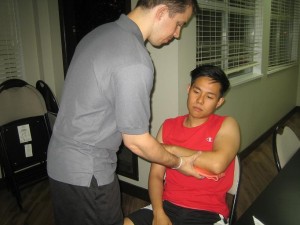Casts and splints have been used to provide support while at the same time protect injured soft tissues and bones. Once an individual breaks a bone, the doctor will position the pieces back in the appropriate position. Casts and splints basically hold the bones in place while they undergo the healing process. Additionally, they also minimize the swelling, pain and muscle spasm.

In some cases, casts and splints are applied after a surgical procedure. Take note that splints provide less support unlike with the casts. Nevertheless, the splint can be easily modified to accommodate the swelling from injuries than the closed casts. Your doctor will be the one to decide which type of support best suits your condition.
Types of casts and splints
The splints can be customized, particularly in cases if the precise fit is required. In some cases, a ready-to-wear splint can be utilized and they are readily available in different sizes, shapes and are easier to use. They are even built with Velcro straps that make the splints easier to use, adjust or take off.
The casts are custom-made since they must fit the form of the injured limb properly in order to provide the best support. Casts can be made out of fiberglass or plastic that can be easily molded.
Materials used for casts and splints
The hard supportive layer in casts and splints is either fiberglass or plaster. Take note that fiberglass is relatively light in weight, lasts longer and breathable. Additionally, X-rays can pass through the material easier than plaster. This is important since an X-ray is required to determine if the bones are healing or moved out of their proper position. As for plaster, it is less expensive than fiberglass and typically forms better for other uses.
Application of casts and splints
Both casts and splints that are made out of fiberglass utilize padding that is usually cotton as a protective layer to the skin. Take note that both materials are available in rolls or strips that are soaked in water and applied over the padding in order to cover the affected area.
The cast or splint should fit the shape of the affected leg or arm properly to provide the best support. Typically, the cast or splint must also cover the joint right above and below the broken bone. In most cases, the splint is required to a newly incurred injury initially. Once the swelling subsides, a full cast is applied as a replacement to the splint. Oftentimes, it might be needed to replace the cast once the swelling subsides since it is too big. The cast can be replaced by a splint once a fracture heals so that it will be easier for the individual to perform the physical therapy exercises.
[youtube url=”http://www.youtube.com/watch?v=_7BNHEAoZr8″]Getting used to casts or splints
The swelling due to an injury can put pressure in the cast or splint for the initial 48-72 hours. As a result, the affect leg, foot or arm feels tight in the cast or splint. If a splint is used, your doctor can demonstrate how to adjust it to accommodate the swelling.
Always remember that it is vital to minimize the swelling first. In doing so, the pain can be lessened while at the same time promote the healing of the injury. The swelling can be minimized by elevating the affected part for the initial 24-72 hours, performing exercises and the application of ice to the cast or splint.
